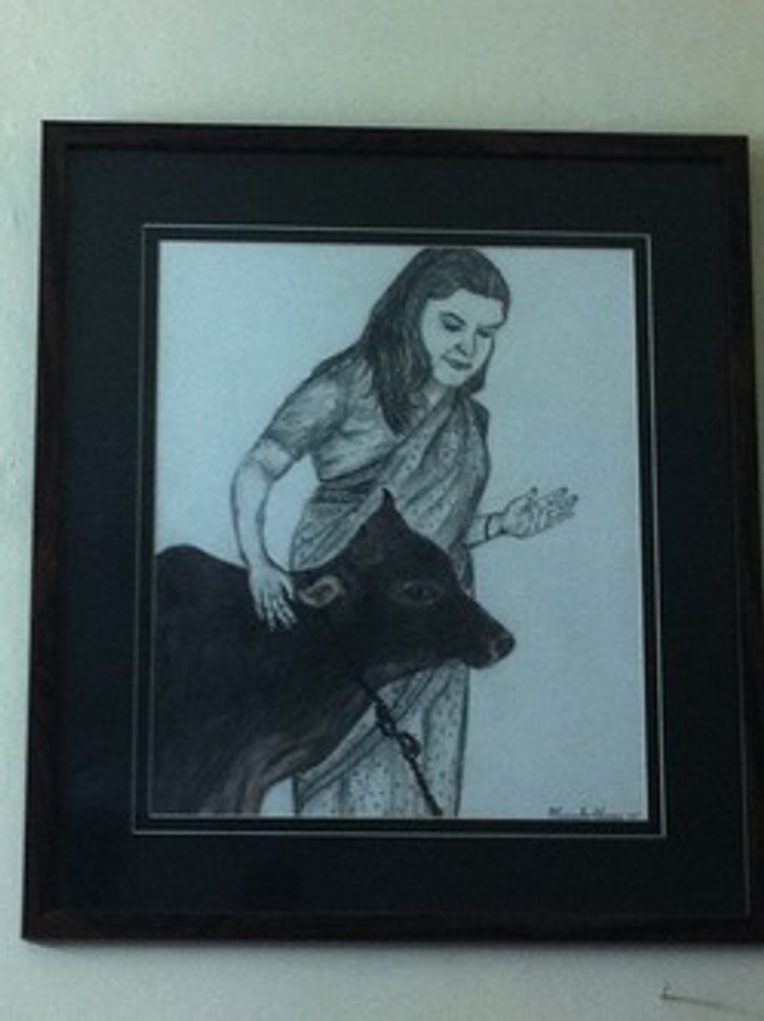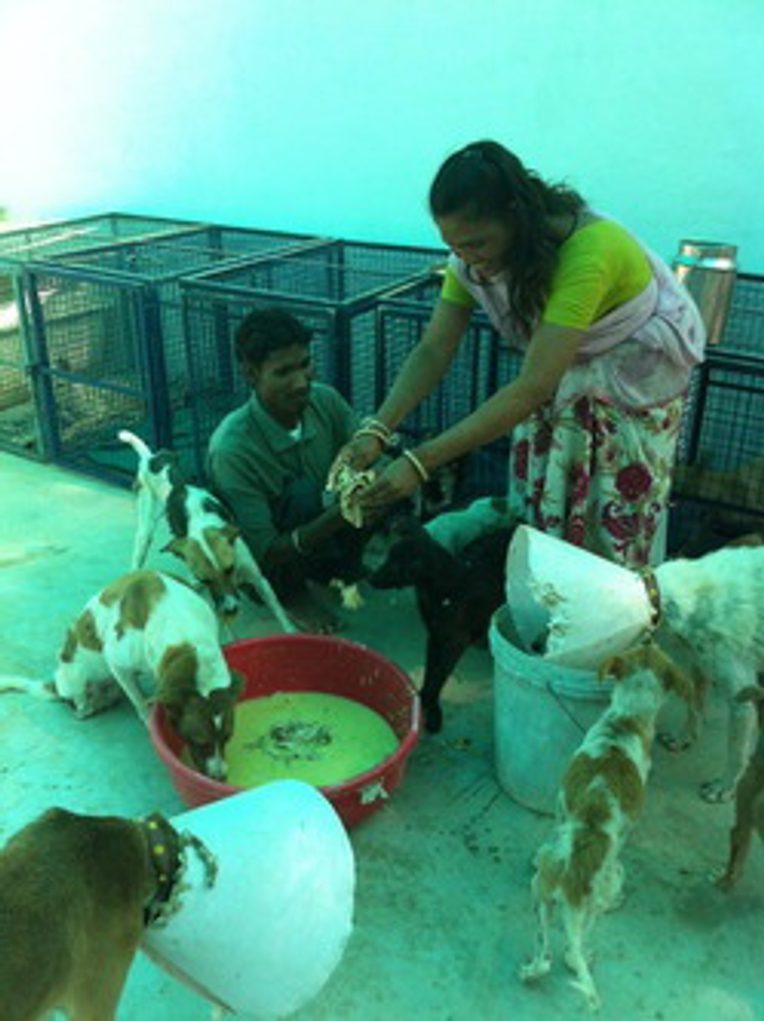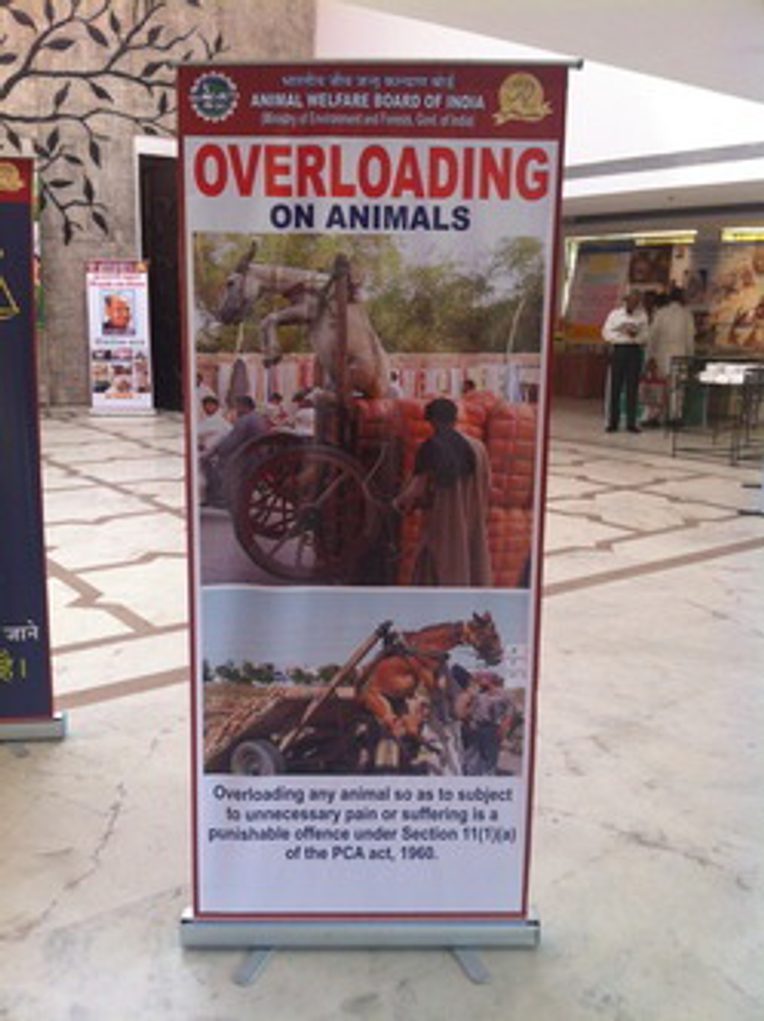This post builds on the research article “Witness: Humans, Animals, and the Politics of Becoming,” which was published in the August 2014 issue of the Society’s peer-reviewed journal, Cultural Anthropology.

Editorial Footnotes
Cultural Anthropology has published innovative ethnographic work exploring human–nonhuman relationships, including Eben Kirksey and Stefan Helmreich’s “Introduction to the Emergence of Multispecies Ethnography” (2010) and the accompanying special issue, as well as several salons and roundtables inspired by multispecies relationships considering new approaches to ethnography and academic collaboration, including “The Multispecies Salon II: Gleanings from a Para-site” (2010) and “Multispecies Salon 3: SWARM” (2010). A special Culture@Large session, “The Human is More Than Human,” on the importance of the nonhuman for anthropologists, was presented at the 2012 AAA meetings.
Cultural Anthropology has also published articles on life, death, and witnessing, include Jean M. Langford’s “Gifts Intercepted: Biopolitics and Spirit Debt” (2009); Peter Redfield’s “Doctors, Borders, and Life in Crisis” (2005), which won the Cultural Horizons Prize in 2006; and João Biehl’s “Ethnography in the Way of Theory” (2013). The Society for Cultural Anthropology’s 2012 biennial meeting was also organized around the theme of life and death.
About the Author
Naisargi Dave is an associate professor in the Anthropology Department at the University of Toronto. She received a PhD in anthropology from the University of Michigan in 2006. Dave’s book, Queer Activism in India: A Story in the Anthropology of Ethics (Duke University Press, 2012), won the Association for Queer Anthropology’s Ruth Benedict Prize for outstanding monograph in 2013.
Dave’s second book is tentatively titled The Social Skin: Humans and Animals in India. It engages posthumanist explorations on humans and animals in India. Her research interests include ethics, activism, gender and sexuality, and affect theory.
Interview with Naisargi Dave
Hemangini Gupta: Your earlier work is an ethnography of queer activism in India that engages deeply with activism as ethical practice. I’m curious about what led you from queer activism to animal activism?
Naisargi Dave: Both projects came from the same place, I have to say: a kind of deep personal affinity. I’m queer myself, for what it’s worth, and a longtime vegan and so on. Of course, this has been the subject of many conversations: of what it means to believe strongly in that which you’re trying to be analytic about, or somewhat differently, the critique of “identity projects.” Leaving aside the old fixation on objectivity, there really are interesting questions here about passion and dispassion, interest and disinterest, and the assumptions we make about these qualities from within our understanding of the relationship of affect and rationality. We all care about, or are drawn to, the things we write about in some way. And what I’ve found is that being close to my subject actually takes me away, ethically, from where I started. For instance, had I to decide now, I doubt I would be a strict vegan. Not because I care about the fate of animals we rear for our pleasure any less; quite the contrary, but because I became convinced that the biggest obstacle to an ethical engagement with animals, or maybe even an ethical life at all, is the imperative of consistency in our lives (not unrelated to identity and its politics) and the imposition of rationalized rules and schemes, which then take the place of reflection and immanent affect.
But to answer your question more directly, I came to this project while doing fieldwork for my first. I was on my way to a meeting of queer activists when I passed by the body of a cow in a trash heap outside of an animal hospital. I wanted to write the story of that animal in a trash heap. What is a cow? What is this hospital? What is trash? What is of value?


HG: Moving a bit deeper into the previous question, I wonder about the space of ethnography in which the categories of animal, activist, and ethnographer are “blown apart,” as you might put it. How did you define your own engagement in these encounters of pain, suffering, and violence? As an ethnographer in Queer Activism, you volunteered with phone help-lines (as one example); did you become similarly involved with daily tasks at animal-rights groups?
ND: I did, though the amount of time I spent and on which tasks I spent time was always a source of some guilt for me, or a sense of inadequacy. I learned, though, that these were feelings I shared with activists, and that all of them struggled with the feeling of “not doing enough” or not doing the most critical things (“critical,” of course, being subjective and volatile). This is something I write about in “Witness”—about compulsion and fervency—but I take it on more centrally in another piece I’m working on about the injustice of the slippage between doing something and doing everything, such that it’s necessary to retreat into doing nothing. This is related to my earlier point about the imperative of consistency.
And so, yes, I carried soiled blankets, consumed things I would have preferred not to, and watched and listened to animals of all types being slaughtered. But what really struck me as I reflected on these encounters was how undone my expectations were. I almost never felt the way I imagined I would feel, and in that intense dissonance there is indeed a being “blown apart” of subjectivity, a thinning of skin, a sensation of something new. But that’s not all there is, and I certainly don’t want to suggest that encounters with pain, suffering, and violence—or their residue—is selfless, just because one is blown apart. I mean, here I am talking about it, in the context of “my experience.” Activists, too, can be deeply invested in what their work says about who they are in the world as moral and affective selves. I want to say there’s something temporal about being blown apart and that it would be interesting to follow these movements between moments of possibility and being snapped back to who we think we are, or were supposed to be.

HG: While conducting fieldwork in Bangalore recently I was struck by how many young middle-class people I continually encountered who adopted dogs, volunteered at dog shelters, gave up full-time jobs to open dog shelters, and set up active online groups to coordinate relief efforts for dogs displaced by land acquisition projects. Are all animals animals or are there hierarchies and particular kinds of affective entanglements that render some people susceptible to the critical pain and suffering of some animals?

ND: This is such an important question. As you suggest, absolutely: “animal” is a senseless term. It is a good example of a category that can only be meaningful through denial of the affective, the sensory, or the immanent: in other words, by seeming to be a logical or reasonable category. It isn’t, and neither is “human.” I am so fascinated by these affective hierarchies within the class of “animal”—between the promising and unpromising—because these usually unarticulated distinctions have such far-reaching significance. Take the phrase “animal lover,” for instance, which the media in India often use to describe animal activists. There’s so much to say about it, beginning with the quite bald dismissal—through a kind of feminization and infantalization—of animal activism as driven by emotion rather than reason. The phrase also suggests that one must love something in order to respect its existence beyond one’s own designs for it. That notion would be absurd if extended to human politics, but that hasn’t stopped us, historically, from doing just that (see Peter Singer on anti-abolitionist rhetoric and its similarities to the rhetoric against animal rights). But more to the point of your question, many animal activists embrace the phrase for reasons affective or political. To generalize just a bit, most of the people I know who wear the moniker “animal lover” are the sorts of activists you talk about: people who love dogs (and sometimes cats) and will do anything for them—as you say, leave a job, turn their own home into a makeshift shelter, sacrifice hours of their life, and often face severe social opprobrium. These same people might experience no conflict between loving animals and eating meat. And there is no conflict! Dogs are animals (and animals are beloved), while chickens are chicken, lambs are mutton, and cows are potent symbols that are also milk and beef. Some of this is about language but it’s also about regimes of visibility and ocularity: which animals do we see; in what contexts do we see them; and what, if anything, occurs through the exchange of gazes (which is premised on the question of which animals we see as being capable of seeing us at all)?
I was actually called out on this recently, not for helping someone remove maggots from a dog’s wound, but for not analytically engaging with the maggot as life. And they were right to call me out! The paper I referred to earlier about “something, everything, and nothing,” is a grappling with this question of what an animal is and what we see as worth saving. The point, I think, shouldn’t be just to identify contradictions: he rescues dogs but eats meat; she’s a vegetarian but bought a leather wallet. It’s only people who act outside of norms who are asked to account for themselves in this way. (And as you suggest, we should instead interrogate the usefulness of concepts within which things appear to us as contradictions.) Nor is the point to make the house bigger so that we can let in all the chickens and rats and maggots; because something will be left out of the house and we’re back where we started. The point, I think, might be to occasionally abandon the imperative of consistency and be open to being surprised by what affects us.


Questions for Classroom Discussion
1. What are the different—even opposing—ideas of witnessing described in the article and how do they conceptualize relationships between the human and the nonhuman?
2. The article begins with an emphasis on the seeing witness and on sight. It moves on to engage with a wider sensorial spectrum. What analytic work does this expanded archive accomplish?
3. Maneka Gandhi describes herself as just a machine with no inside: “There is just this skin.” The skin is the human body’s largest organ, most susceptible to sensation. What conception of self and agency might emerge from an imagination of oneself as “just this skin?”
4. Were there specific moments in the text during which you felt moved and affected by the shifting categories and states of being of human and animal? Which were they and what literary and narrative techniques does the author employ to suggest them?
Related Readings
Haraway, Donna. 2007. When Species Meet. Minneapolis: University of Minnesota Press.
Derrida, Jacques. 2011. The Beast and the Sovereign, Volume 1. (Lectures of Jacques Derrida). Translated by Geoffrey Bennington. Chicago: University of Chicago Press.
Sontag, Susan. 2003. Regarding the Pain of Others. New York: Farrar, Strauss, and Giroux.
Supplemental Resources
The website of Maneka Gandhi’s People For Animals.
Engebretson, Monica. 2013. “India Joins the EU and Israel in Surpassing the US in Cruelty-Free Cosmetics Testing Policy.” Huffington Post, July 23. Accessed July 28, 2014. India becomes the first Asian country to ban cosmetics-testing on animals.
Vohra, Kumal, dir. 2012. The Plastic Cow. Karuna Society and Kindness Trust. 34 minutes. This documentary tells the story of the status of the cow in India and the critical threats to it posed by the disposal of plastic garbage.